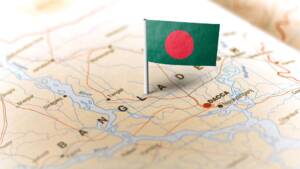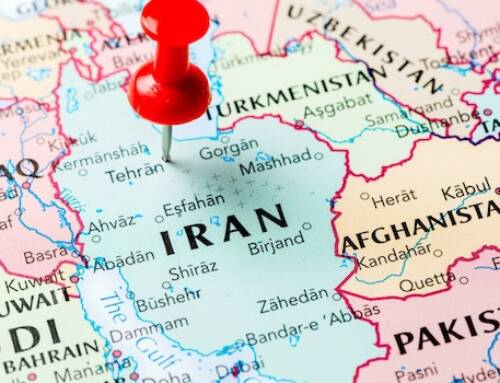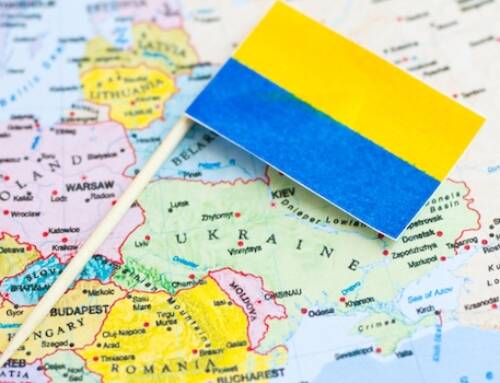
Bangladesh
Human Trafficking is a Growing Concern
Human trafficking is one of the gravest human rights challenges facing Bangladesh today. Behind every statistic lies a story of broken trust, shattered dreams, and unimaginable suffering. For thousands of Bangladeshis, the promise of a better life abroad often ends in exploitation, violence, or death. Among them was Syed Abdus Salam, a 42-year-old agricultural laborer, whose journey toward hope was hijacked by traffickers and turned into a harrowing ordeal of captivity and torture in Libya. After about a year and a half, he was released from there with the help of the Police Bureau of Investigation (PBI). He returned home with a broken trust, shattered dreams, and unimaginable suffering.
What happened to Syed Abdus Salam?
Syed Abdus Salam decided to go abroad for the welfare of his family. His neighbor was a man named Nawab Ali. This man said that he could send Abdus Salam to Romania. After discussing this with the Salam family, he decided to go to Romania. Later, Nawab Ali asked Salam to be sent to Italy instead of Romania. Accordingly, Salam signed a contract with Nawab Ali for four lakh taka (approximately USD 3,300). After receiving the contract money, Nawab Ali took him to Dubai through Hazrat Shahjalal International Airport on March 22, 2023.After staying there for two days, he took him to Egypt. After a five-hour break in Egypt, Nawab Ali took him to Libya and detained him in a house. From there, after 20 days, Nawab Ali sent him to some unknown people to send him to Italy. The men asked Salam to contact two men named Nadeem and Hassan. Salam contacted them. They then detained him at an unknown location. There, they began to physically and mentally torture Salam to extort money. After that, they collected 1.5 million taka (approximately USD 12,400) from Salam’s family at different times. This money was paid with great difficulty by selling the family’s land and house.
Salam’s family realized that he was being held hostage by a human trafficking gang. To rescue him, his wife filed a case in court under the Human Trafficking Act on May 2, 2024. The court directed Police Bureau of Investigation (PBI) Jessore to investigate the case. The investigating officer of the case, the PBI inspector, was able to contact the accused Nawab Ali, a member of the human trafficking gang living abroad. With the help of the PBI, he returned to the country on September 13, 2024.
There are many stories like Abdus Salam, stories that start with hope and end up in tradegies. Among them, there are many women and children. Their backgrounds are different. Many of them can never return to their families. Some return as corpses.
How many people have been victims of trafficking?
Over the past 17 years, 12,324 people, including men, women, and children, have been trafficked from Bangladesh to other countries. While 9,710 of them have been rescued, 2,614 women and children are still missing. During this time, 6,735 human trafficking cases have been filed, and 27,363 people have been accused. Out of these, law enforcement agencies have arrested 12,280 individuals.
However, progress in solving these cases has been slow. Only 233 investigations have been completed in the past 17 years. As a result, 409 people have been convicted. In total, 810 cases have reached a conclusion. Among the accused, 1,716 people were found not guilty. Courts have sentenced eight people to death in six separate cases. Additionally, 299 were given life sentences, and 102 received various other prison terms and fines.
Why is the risk of trafficking increasing?
Due to its geographical location, Bangladesh has become one of the centres of human trafficking. Currently, the Bay of Bengal has become the biggest route for human trafficking. Economically disadvantaged people in villages are easily deceived by attractive job offers. They are easily transferred illegally without being able to catch the deception. The report, titled ‘Global Report on Trafficking in Persons’ (United Nations Publication), was published in 2020. The report stated that financial need is the most significant risk factor of trafficking in persons in Bangladesh. Poverty and the lack of opportunities to earn an income may lead people to accept risky or unstable jobs. Many people in rural areas remain relatively poor. Traffickers use deceptive schemes inside the recruitment stage in order that job offers seem like feasible solutions to relieve situations of economic want. This relative lack of monetary capabilities is a push factor, engaging people to try to find employment abroad, under guarantees of better wages and jobs in international locations. Traffickers often use felony pathways to site visitors their victims from Bangladesh to locations overseas in which they may accept less favourable contracts and/or lower wages than promised. Furthermore, the search for higher livelihood opportunities abroad can isolate individuals from their guide networks and increase the risk of trafficking.
Another threat factor is inequality. Often combined with economic needs, ethnic or linguistic differences create multiple levels of risk for certain people. Rohingya people are a stateless minority displaced to Bangladesh from Myanmar. In Bangladesh, where many Rohingya human beings have sought safe haven, they stay stateless and are confined to get entry to safety and basic human needs. Furthermore, they generally acquire lower wages and interact in riskier work, making them susceptible to becoming victims of trafficking in people.
A vast network of human trafficking rings
There is a vast network of human trafficking gangs everywhere, from villages to cities. By inventing new routes, the gang members are making huge sums of money by smuggling men and women to different countries. The gang members target unemployed youth and women in the villages. Later, the gang members, promising good salaries and sending them to various countries, including the Middle East, gradually extorted three to eight lakh rupees. Most of the victims of trafficking who went abroad fell into great distress. Many of them were arrested and detained by the police in their destination countries, unable to find any jobs. Many others, even after going abroad, are held hostage by the gangs and subjected to horrific torture. These gangs often record videos of the torture in torture cells abroad and extort large sums of money from family members back home.
Women and children are being trafficked almost every day. Most of the women who are trafficked are subjected to brutal torture abroad. Women are being trafficked mostly to neighboring countries like India, Saudi Arabia, Dubai, and China. Police officials say that due to the lack of adequate employment opportunities in the country, many people are falling victim to human trafficking as they seek employment abroad. In addition, several gangs are trapping women and children and smuggling them to different countries.
What are the various research reports mentioning?
Bangladesh has not fully achieved the minimum standards for eliminating human trafficking. However, the Bangladesh government is making significant efforts to achieve it. These are stated in the annual report of the US Department of State on human trafficking. According to the US report, the Bangladesh government’s efforts to combat human trafficking include increasing investigations, prosecutions, and convictions of traffickers. Despite these efforts, the Bangladesh government has failed to meet minimum standards in several key areas, the report said. The government has increased law enforcement efforts but has not taken sufficient steps to address internal trafficking-related crimes, including trafficking for sexual exploitation, forced child labor, or bureaucratic complications.
Steps to be taken to prevent human trafficking
1. Effective measures should be taken to prevent human trafficking through agreements with countries where the rate of human trafficking is high. People involved in human trafficking should be identified and brought to justice effectively.
2. Many people choose illegal routes to go abroad at a low cost. Therefore, the migration costs of government workers must be brought down to a reasonable level. It must be ensured that agencies do not charge excessive fees in any way.
3. If you notice someone unfamiliar or new in the area and have the slightest suspicion about their behavior, you must definitely inquire. If necessary, you should inform the police or public representatives. In addition, it is necessary to give a proper understanding to the students of educational institutions about human trafficking. Awareness discussions can be held once a quarter in each educational institution with the participation of all students.
4. Information and awareness-raising programs should be implemented in different institutions and organisations. Officials at various levels should be trained to communicate with and supervise victims of trafficking. NGOs should come forward to provide clothes, food, money, and even time for victims of trafficking.
Special Note: The data and statistics mentioned in this report have been taken from reports published by various research and investigative agencies. In addition, data has been collected from news published in various newspapers and media outlets in the country.
by Hasan Hamid
ISHR National Associate & Representative in Bangladesh
References




